I am a huge fan of road trips. I love the freedom to explore out of the way places on my own time table. The US is one of my favorite spots for a road trip (New England and Arizona were two of my faves), although I have also done them through England and Scandinavia in cars.
A few years ago, we took our first RV trip to Las Vegas over a long weekend. I also grew up taking RV trips with my great grandmother throughout the southwest, some of my favorite childhood memories.
Intending to travel safely in the pandemic, my family rented a motorhome to explore the northern midwest US for a couple of weeks. You can check out our itinerary here. My husband and I were both worried about driving a large vehicle and managing an RV. After watching all the videos from the rental company, we set out.
Despite the videos, we had our fair share of snafus but also felt that after a few days, we got much more of a handle on things. My husband and I put together this article and checklists to help you skip the mishap part of your trip and just give you the good stuff. We are a big believer in checklists to help keep organized, partially inspired by Checklist Manifesto available on Amazon (for which I am an affiliate).
This advice is based on our experience with two weeks in an RV and is in no way an alternative to reading all the manuals and watching the videos from your RV company.
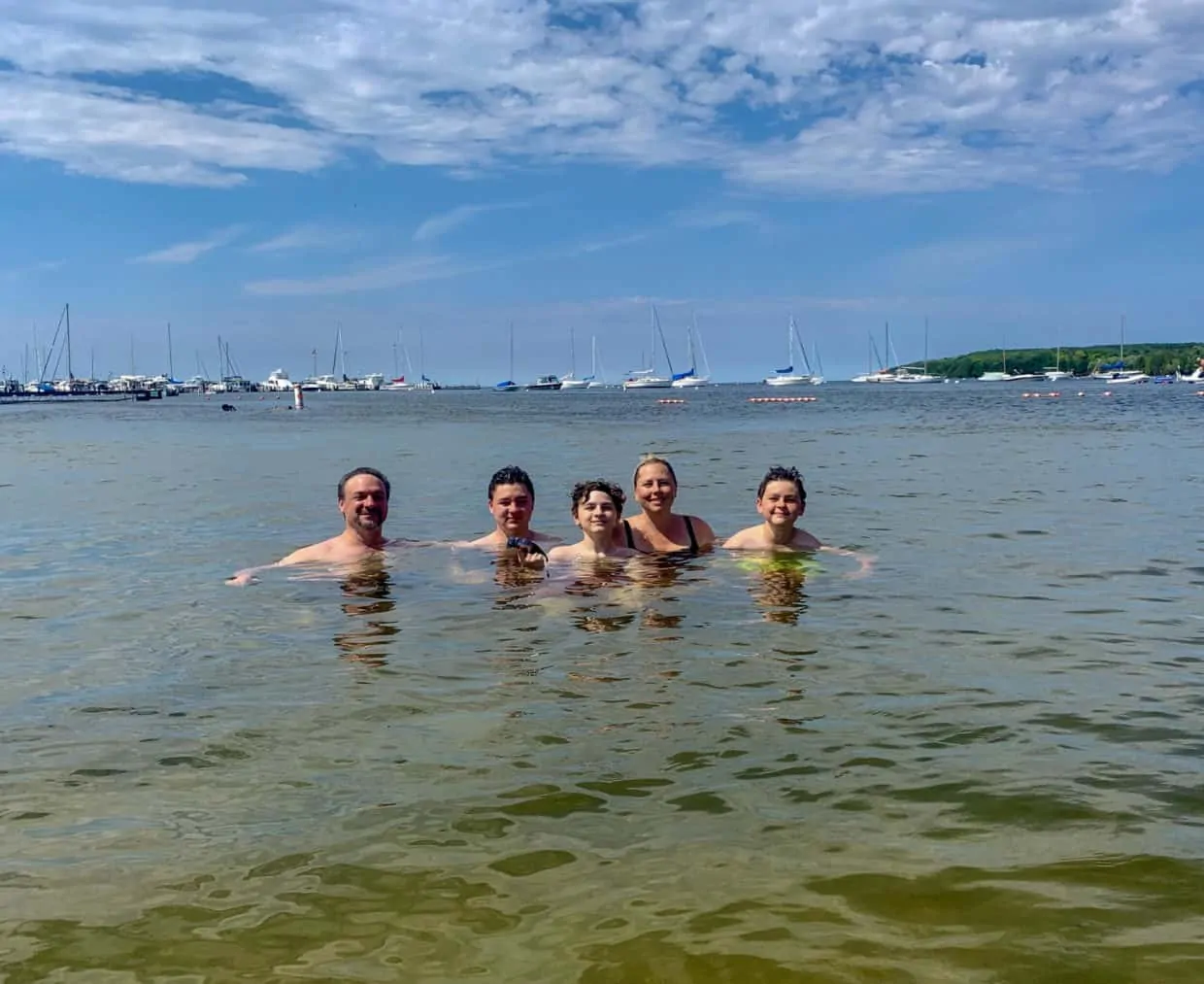
What it is Like to Drive a Motorhome
It is definitely more tricky than driving a small car, but not as bad as we thought. It took about a day to get used to the size.
We had a 30-foot class C motorhome. It had very big mirrors, so it was easy to see what was happening on the sides. You must take wide turns and pay strict attention to both mirrors, so you don’t sideswipe something.
If you have the opportunity, take a day before you leave to practice driving on streets with which you are already familiar.
Backing up is the trickiest part. Even with beepers, you can’t see behind you at all. You need a second person to get out of the vehicle and direct you. It is easiest if they stand behind the driver’s window, making sure they can see the driver in the mirror. Work out hand signals ahead of time. Many RV sites are back-in. These are easier to finagle getting into during daylight.
What is the Difference between the Classes of Motorhomes?
Class A:
Class As are solid vehicles built on bus or truck chassis. They are generally more spacious and luxurious and have slide outs. They offer phenomenal panoramic views of the road but have the worst gas mileage. They are more different than cars to drive. In some states, you need a special license to drive one.
Class B:
These are camper vans.
Class C:
Class Cs are built on a cabin chassis and have a sleeping area overhead.
Parking Your RV
We didn’t tow a car, but would definitely consider doing it next time. The good thing about traveling during COVID was that it wasn’t that crowded. Parking lots were much emptier than they often are. It helps if you have a lot of space to park your rig, so it can be hard to find a spot.
Rethink How Many Miles You Can Drive in a Day
I am used to planning road trips based on driving a car. The itinerary has to change for an RV. I assumed we would save time not moving our stuff into a hotel, but RV travel is much slower.
- You can’t drive as fast as you can in a car.
- A motorhome needs a long time to stop.
- It takes extra time to maneuver on small roads.
- Some roads don’t allow big vehicles.
- It takes time to set up and break down camp.
- Dumping waste has to be done often and takes a lot of time.
- The RV needs to be converted inside from day to night, then back to have seatbelts for driving. Most states require seatbelts in the back while driving.
First RV Trip Checklists
Click through to access two checklists to take along on your first motorhome trip. When you are on the page, simply right-click to get the printing menu.
Things to Bring on an RV trip
Here is a list of things to be sure to bring, as well as a few luxury items that we were happy to have. I am an Amazon affiliate, so if you purchase through them, I will make a commission.
- Clothes
- Bathing suit
- Quick Dry towels for showering and adventures
- Soap
- Dish soap and sponge
- Hand towel
- Mat and chairs for outside RV
- Sunshade– most of the campgrounds that we were at didn’t have a lot of shade. If your RV has a built-in awning, that is ideal.
- Tablecloth and weights
- Wipes
- Long hose
- Toiletries
- Paper towels –
- RV-friendly toilet paper- Before my trip, I had no idea that an RV needed special toilet paper, but without it, you could clog up your system, making a huge mess.
- RV toilet tabs
- Bedding
- Plastic Bins for Organization– We used these to organize in the large storage area under the rig. I also used small bins in the bathroom and kitchen. The smaller the space, the more organization is key.
- Pillow mattresses cover or weighted blanket to put on the uncomfortable plastic mattress.
- Small portable barbeque and cooking accessories– Some of the campgrounds had grills, but some didn’t.
- We brought a portable power station for nights that we were camping off the grid. It was the luxury item that we were most happy to have.
Where to Stay with your RV
Before I took this trip, I had no idea how many options there are for spending the night in an RV.
You can, of course, rent a spot in an RV park. You can choose to have full or partial hook-ups in a park, pull through spots, fancy resorts, or secluded woods. You can choose a spot full of activities or with nothing but nature. But there are also many more options.
You can often stay in rest stops, on undeveloped campsites on federal land management and forest service lands, and some parking lots. This off the grid option is called boondocking. These options are free, but the negative to dry camping is that you will not have hookups. It isn’t safe to run your generator overnight, so that means no AC, lights, ext. Many Walmarts and Cracker Barrels will allow you to park overnight.
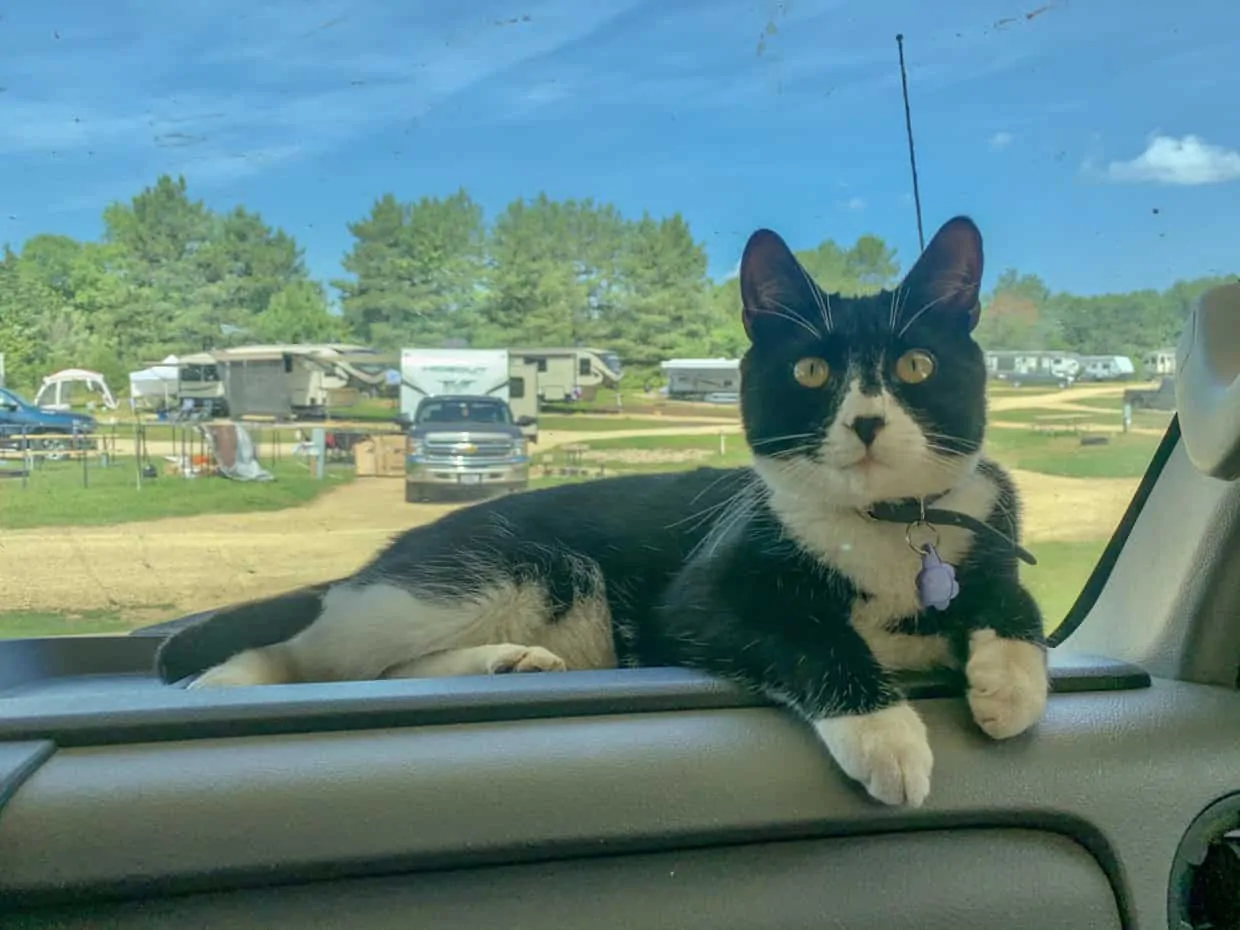
Can You Bring a Pet in an RV?
RV parks are full of dogs, so the answer is definitely yes.
We brought one of our cats, and it enhanced our trip. To have him along, we had to modify a few things. We brought a small, flexible litter box that we changed daily. This litter box fits perfectly between the wall and the back bed. We also trained Claude, our indoor cat, to be happy with a harness on. We didn’t want him to get lost away from home. When you have an animal with you, you also need to consider the rig’s temperature when you are away.
These extra considerations were more than worth getting to have our kitty with us. Of course, your cat has to have the temperament to travel and not get carsick. If he isn’t used to the car, consider taking him on some warm-up rides.
Everyone in our family ended up loving this trip, which says a lot with teens. Some of the issues that we had were because of renting through Cruise America. We had an awful time with them, and they have done nothing to resolve it, despite my reaching out multiple times. My friends have rented through outdoorsy or RVshare and had much better rental experiences. Regardless, we see many more motorhome trips in the future.
Do you see an RV trip in your future? Where would you like to go?
If you have already been, what advice do you have?
Enjoy your trip!
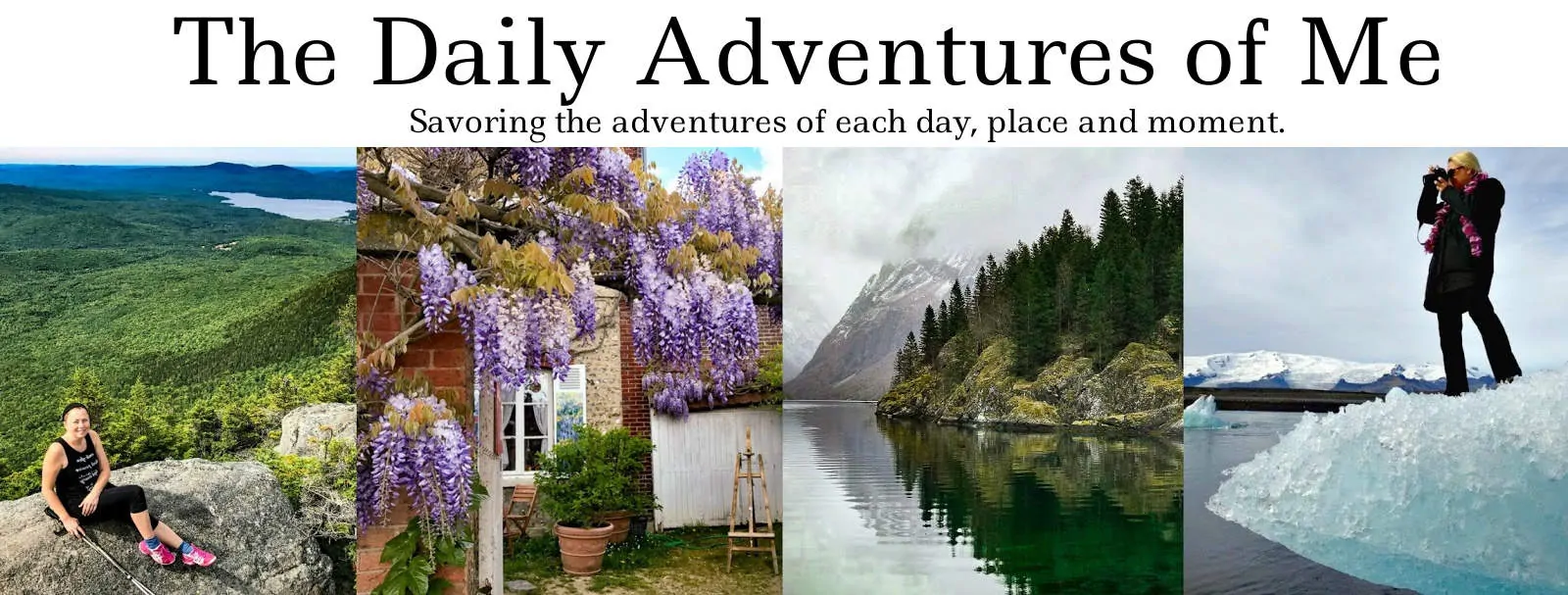
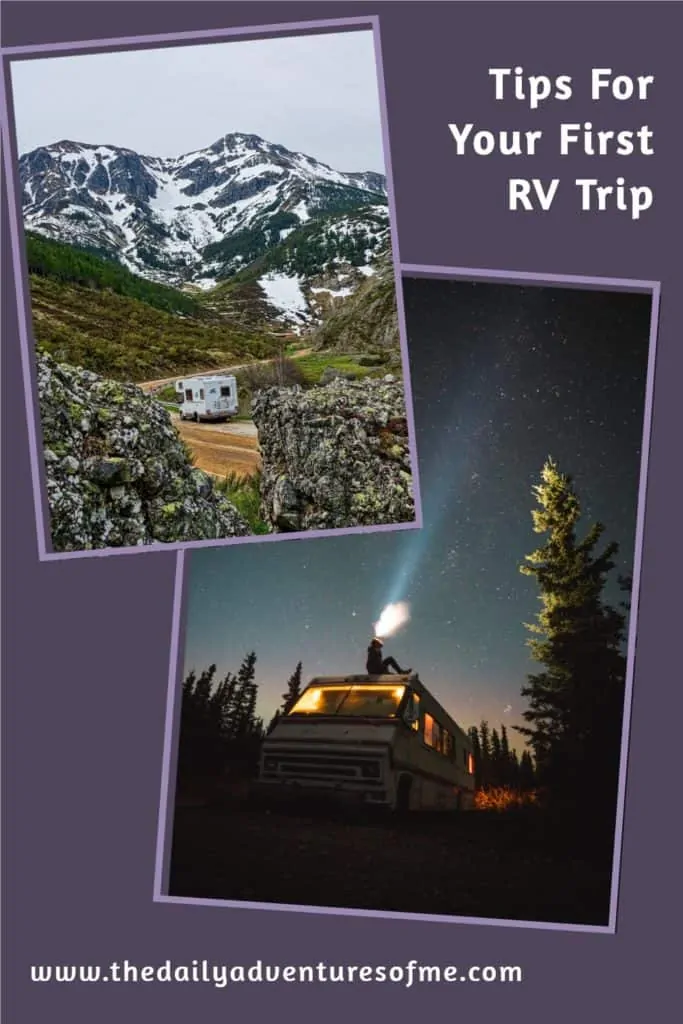
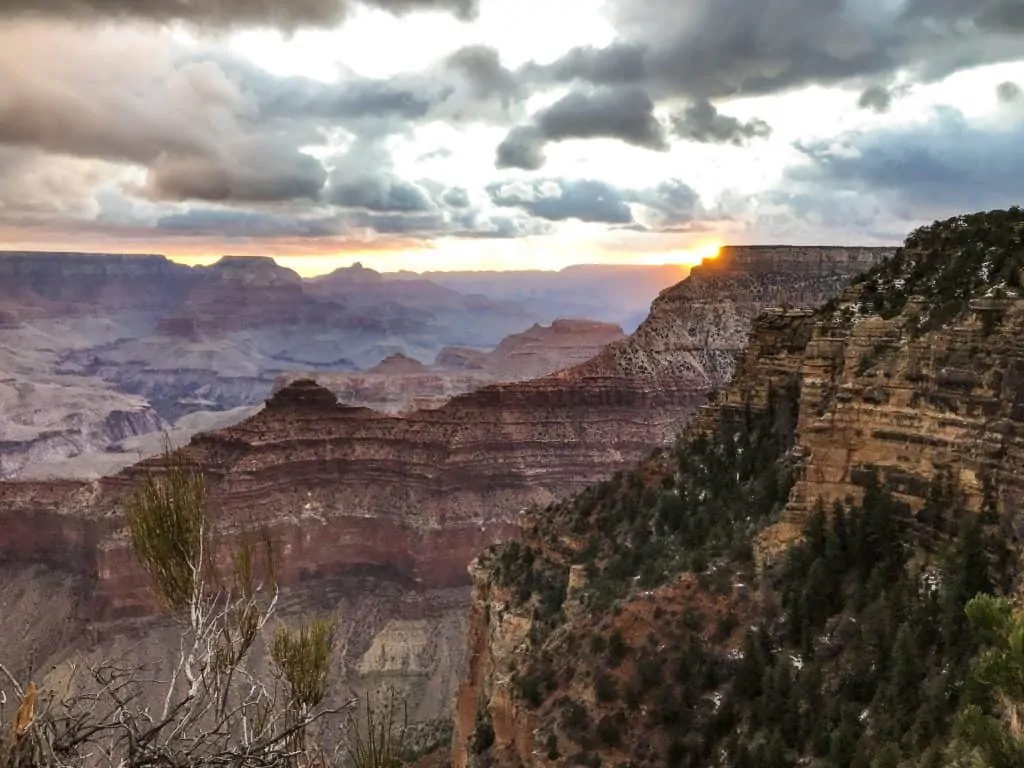
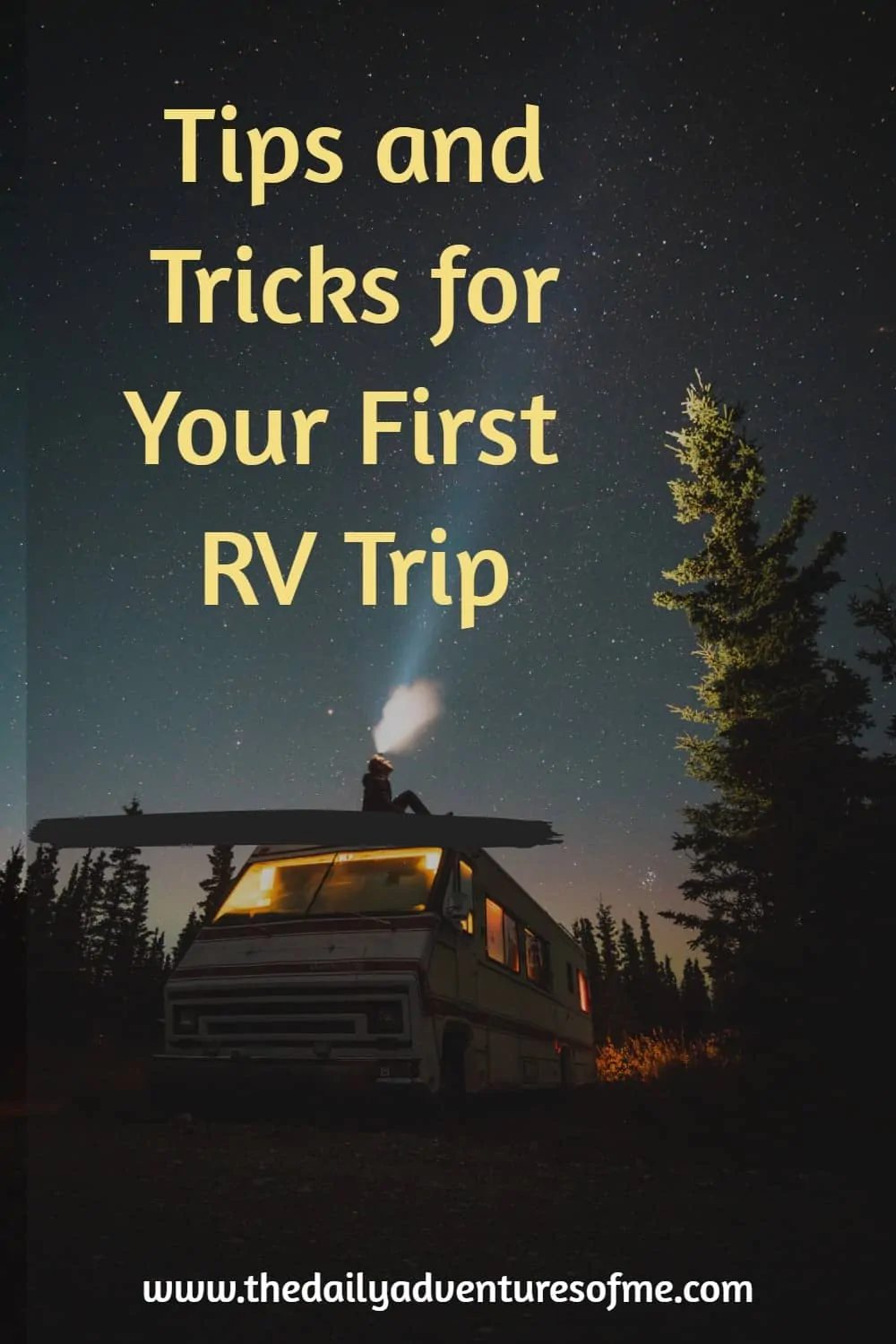
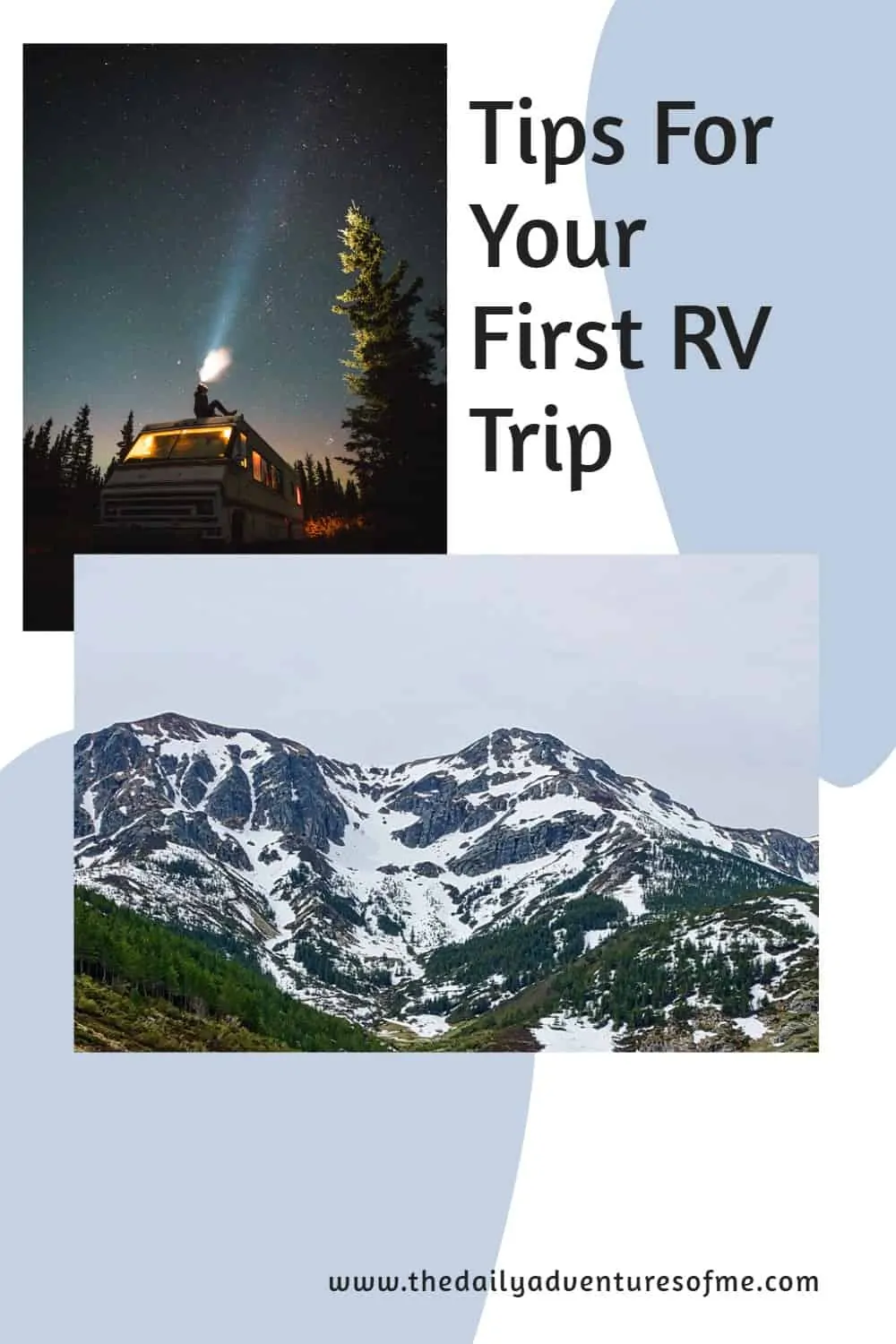
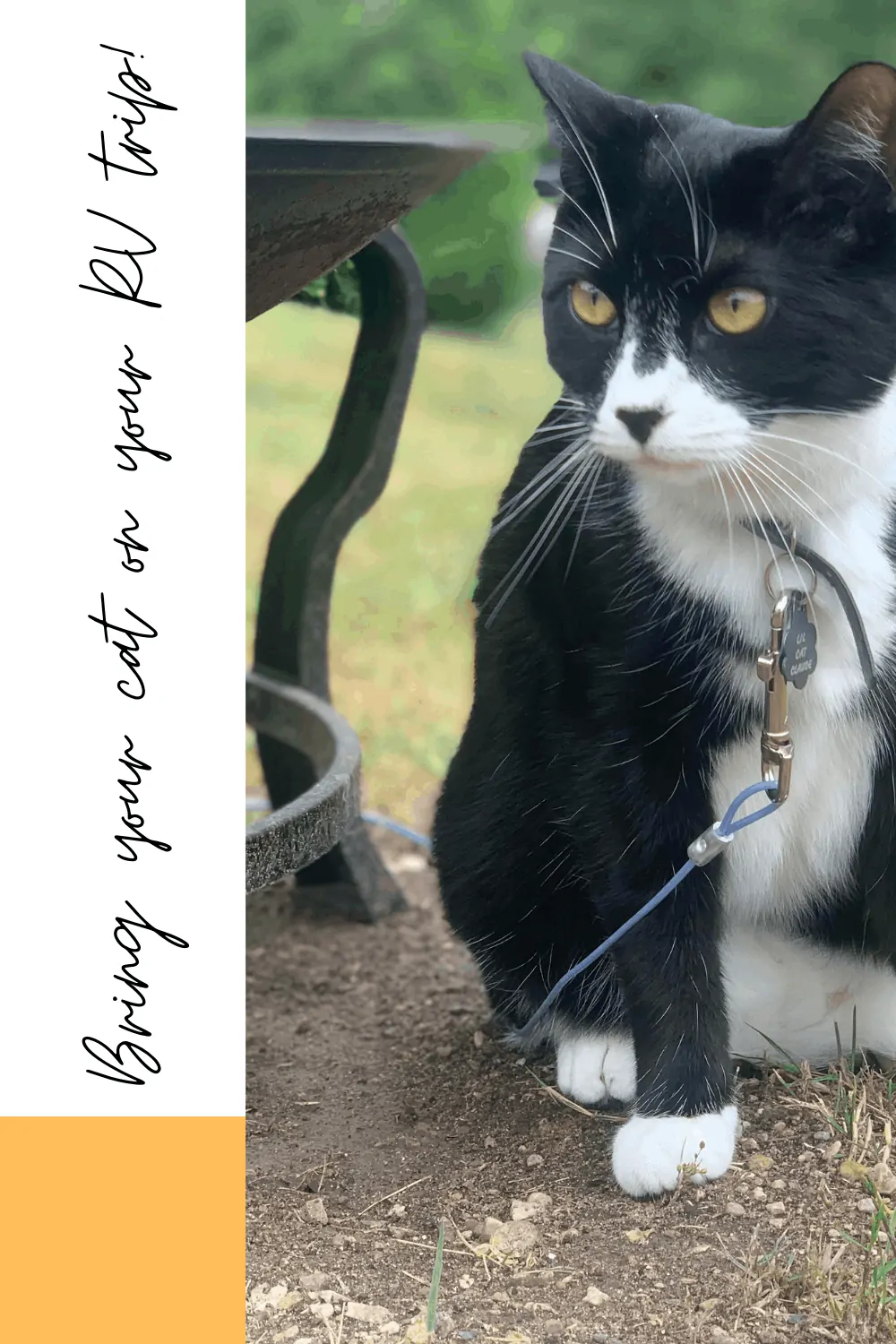
I would love to do a trip in an RV but I would want a reasonably compact vehicle, nothing too big as I would still want a fairly comfortable drive… I love that you took your cat, it’s nice to have that company and I bet the cat would love the travelling around!
We love RV roadtrips! We live in the UK and our RV in the US is currently in storage awaiting the time that we can return. We joked when we put it into storage at the end of the ski season in March, that it was really secure and even if we could not return for a year, it would be fine. That is no longer a joke.
You have some great tips here. Not sure what else I would add, except that winter RVing requires special care – and lots of insulated pipes and heat tape! We don’t tow a car, but have a motorbike for getting around once we have made camp. Bikes, especially electric bikes, are also a great addition. In terms of campsites, I think that the best sites are actually in State Parks. They are much more scenic than the commercial ones usually and are cheaper, even though you can often get a full hook up. Yes to boondocking!
I agree with you on state parks. I loved the simple woodsy ones.
So Darcee & I were talking the other day about if we ever wanted to do the whole RV type of road trip across America or not. We have even had thoughts of converting an old mini-school bus. But to be honest after looking at all these RVing tips for beginners, I may have to skip it all together. Don’t get me wrong, I am an avid outdoorsman and backpacker. But I think I like the simplicity of tent camping and anything bigger than that, just but me in a motel.
I mean, the amount of stuff on the beginner RVing checklist surrounding the toilet alone would make my minimalist mind explode!
It was definitely more complicated than I imagined. And you should see what the campsites of the people who do this long term look like-Extravagant!
We’ve done a few road trips in the US but hired a car and stayed in hotels and motels etc. What I’d love to do is a six month road trip, travel slow and really soak up each destination. It sounds like an RV would be the perfect way to do this and with just the two of us (no cat!) we’d manage with one of the smaller RVs. Thanks for all the really useful tips.
I would love to travel in an RV long term as well.
RV living in a C Class is our dream after our son goes to college. I’m glad I bumped to your article because it’s full with first time experiences. We thought about renting one for an experience, but we’re not sure whether we could bring a dog. After seeing you brought along your cat, I think there are always renting places that will allow customers to bring their pets along.
I think they will definitely let you have a dog. Have fun!
It’s really interesting to hear about RVing in the States. I’m in Australia and lived on the road in a caravan for a few years. There are a lot of similarities, but just as many differences. I agree with your advice on time frames – road tripping in a car is much quicker, so that needs to be taken into account! Also, over here we call Boondocking ‘Free Camping.’
That’s a good name for it, although boondocking has pizzaz.
I have always wanted to do an RV holiday and your story answers so many of my questions. I’m even thinking about taking my cat with me, but I will have to get him used to a harness first.